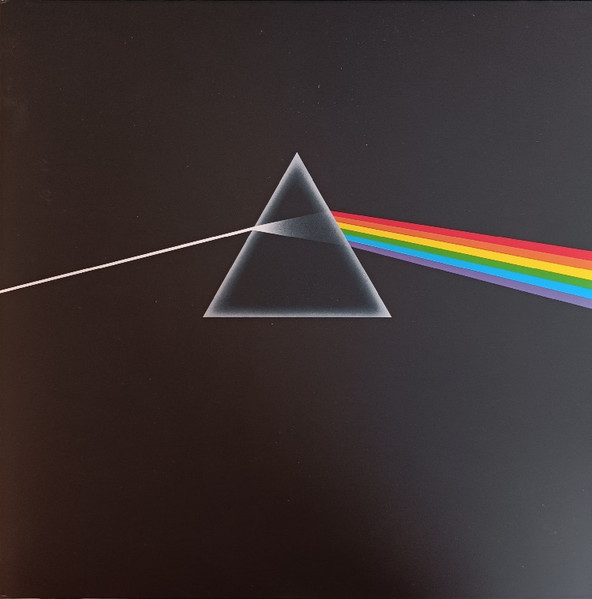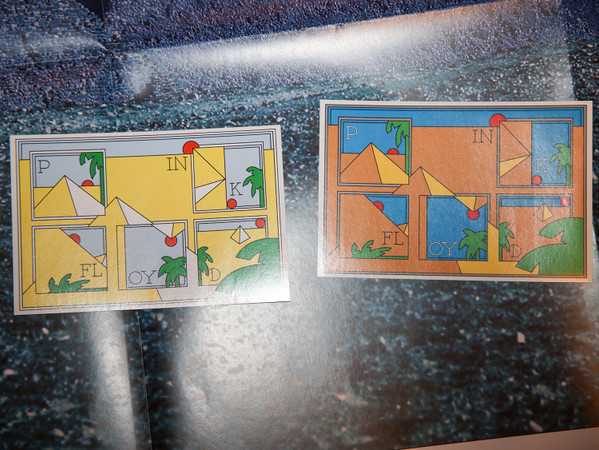
The Dark Side of the Moon is the eighth studio album by the English rock band Pink Floyd, released on 1 March 1973 by Harvest Records in the UK and Capitol Records in the US. Developed during live performances before recording began, it was conceived as a concept album that would focus on the pressures faced by the band during their arduous lifestyle, and also deal with the mental health problems of the former band member Syd Barrett, who had departed the group in 1968. New material was recorded in two sessions in 1972 and 1973 at EMI Studios (now Abbey Road Studios) in London. The record builds on ideas explored in Pink Floyd’s earlier recordings and performances, while omitting the extended instrumentals that characterised the band’s earlier work. The group employed multitrack recording, tape loops, and analogue synthesisers, including experimentation with the EMS VCS 3 and a Synthi A. The engineer Alan Parsons was responsible for many aspects of the recording, and for the recruitment of the session singer Clare Torry, who appears on “The Great Gig in the Sky”. The Dark Side of the Moon explores themes such as conflict, greed, time, death, and mental illness. Snippets from interviews with the band’s road crew and others are featured alongside philosophical quotations. The sleeve, which depicts a prismatic spectrum, was designed by Storm Thorgerson in response to the keyboardist Richard Wright’s request for a “simple and bold” design which would represent the band’s lighting and the album’s themes. The album was promoted with two singles: “Money” and “Us and Them”. The Dark Side of the Moon has received widespread critical acclaim and is often featured in professional listings of the greatest albums of all time. It brought Pink Floyd international fame, wealth and plaudits to all four band members. A blockbuster release of the album era, it also propelled record sales throughout the music industry during the 1970s. The Dark Side of the Moon is certified 14× platinum in the United Kingdom, and topped the US Billboard Top LPs & Tape chart, where it has charted for 990 weeks. By 2013, The Dark Side of the Moon had sold over 45 million copies worldwide, making it the band’s best-selling release, the best-selling album of the 1970s, and the fourth-best-selling album in history. In 2012, the album was selected for preservation in the United States National Recording Registry by the Library of Congress as being “culturally, historically, or aesthetically significant”. It was inducted into the Grammy Hall of Fame in 1999.
Tracklisting
| Position | Title |
|---|---|
| A1a | Speak To Me |
| A1b | Breathe (In The Air) |
| A2 | On The Run |
| A3 | Time |
| A4 | The Great Gig In The Sky |
| B1 | Money |
| B2 | Us And Them |
| B3 | Any Colour You Like |
| B4 | Brain Damage |
| B5 | Eclipse |
Apple Music
Release Images
Release Information
| Key | Value |
|---|---|
| Wikipedia URL | https://en.wikipedia.org/wiki/The_Dark_Side_of_the_Moon |
| Format | 1× Vinyl (50th Anniversary, 180 Gram) LP, Album, Reissue, Remastered, Stereo |
| Label | Pink Floyd Records |
| Catalog Number | PFR50LP1 |
| Notes | Gatefold cover issued with two posters and two stickers. Different UPC and [l267164] code than [r=28614196]. Hype Sticker: “Pink Floyd 50 The Dark Side Of The Moon Remastered For The 50th Anniversary On Heavyweight 180g Vinyl” Made in The Netherlands Runouts description: all runouts are etched, except “37307 3A” and “37307 4B (or variants of)” that are stamped. The variant 2 B side contains “400172 1” which has been crossed out. Variant 8, side B, the first 18 is actually a 1 with an 8 stamped directly on top of it. Also the etched LI on both sides is in an etched box. Variant 11, side B, the 8 is crossed out. LI is also boxed on both sides. |
| Discogs URL | Pink Floyd - The Dark Side Of The Moon |













